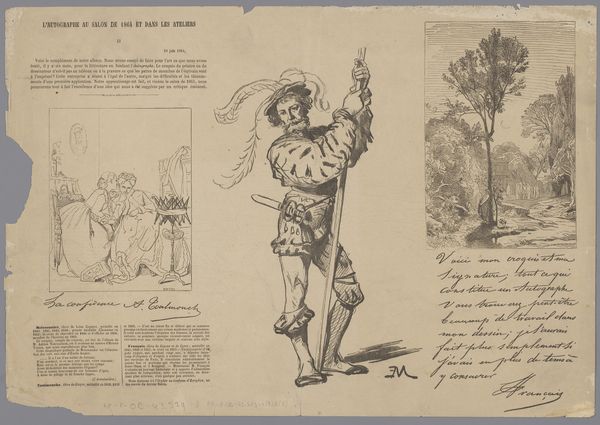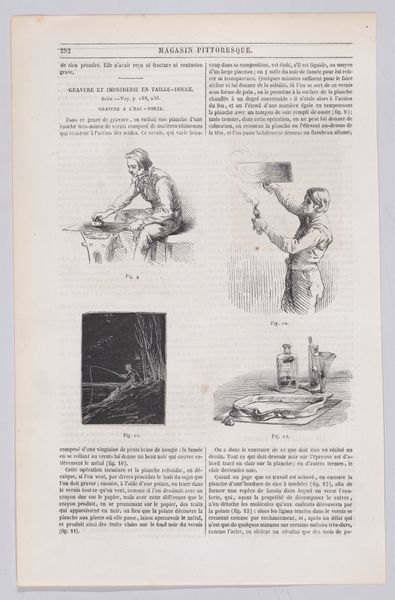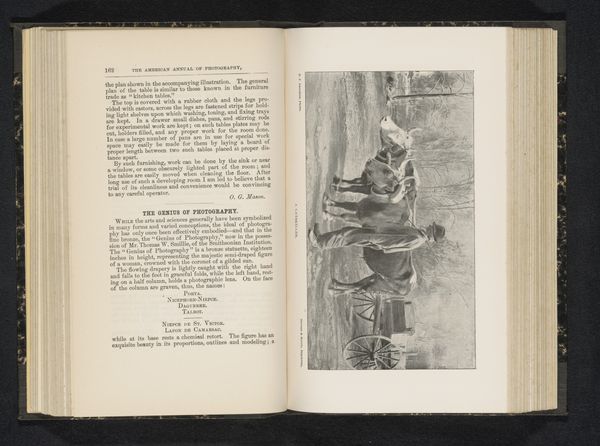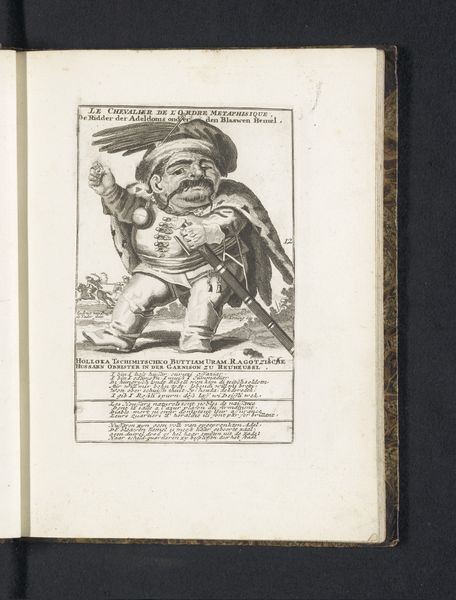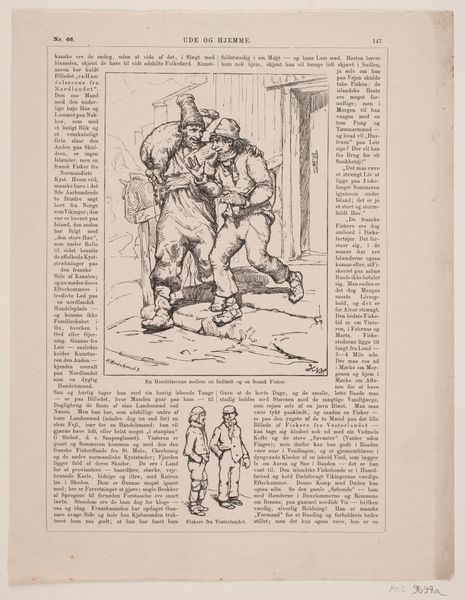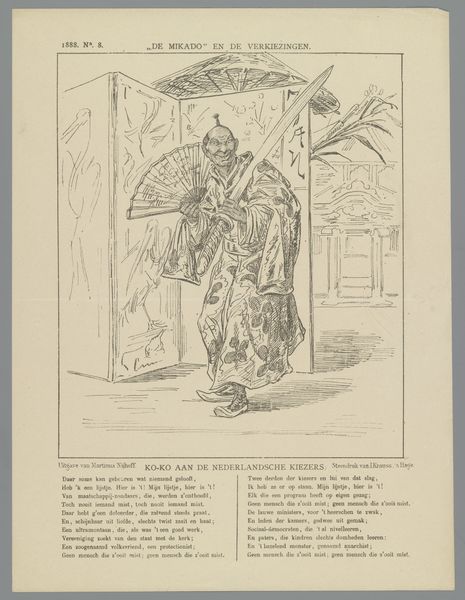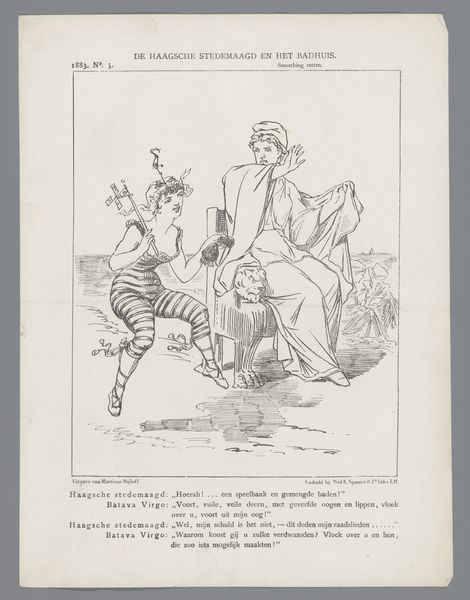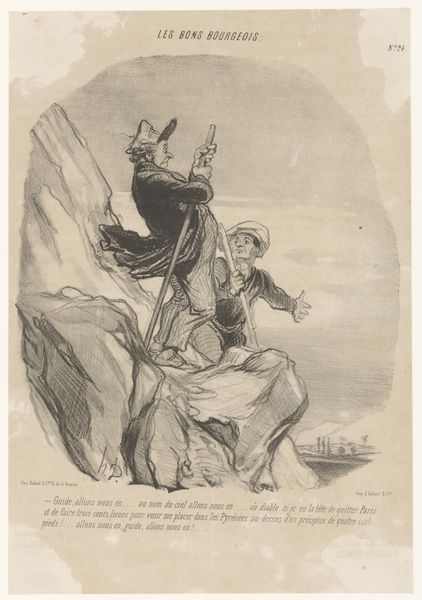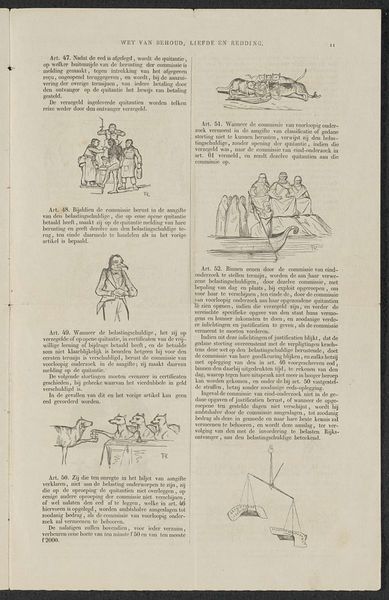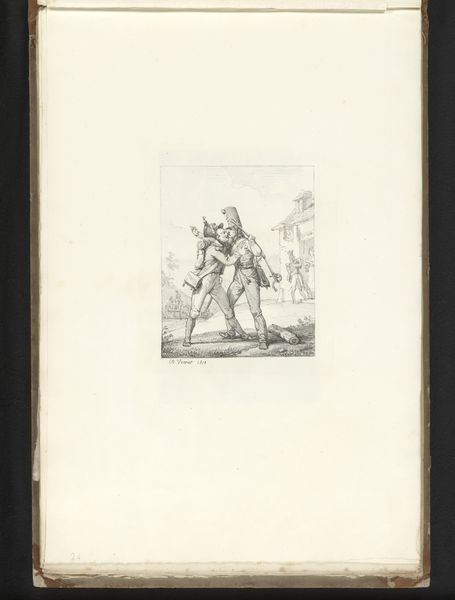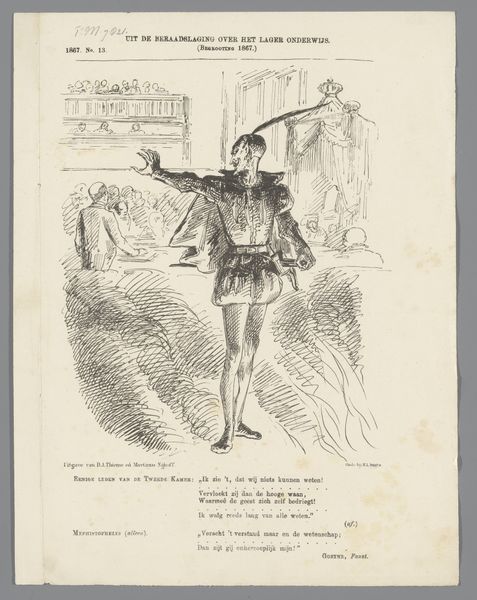
Middeleeuwse minstreel bij een beschrijving van een de dans 'prince-menuet' before 1884
0:00
0:00
drawing, print
#
portrait
#
drawing
#
medieval
# print
Dimensions: height 350 mm, width 275 mm
Copyright: Rijks Museum: Open Domain
Curator: Here we have a fascinating print entitled "Middeleeuwse minstreel bij een beschrijving van een de dans 'prince-menuet'," or, "Medieval Minstrel Describing the 'Prince-Menuet' Dance," attributed to Frederik Nachtweh, created sometime before 1884. Editor: My immediate impression is one of curious stillness, despite what I imagine was intended as a vibrant celebration. The sepia tones lend a somewhat somber air, and the minstrel figure seems caught in a suspended moment. Curator: Note how the artist has framed the minstrel within swirling ribbons and decorative borders, typical of medieval manuscript illustration. This reinforces the work's intended connection to both performance and storytelling traditions. The strong verticals create stability while the swirls inject energy and movement. Editor: The ribbons almost feel like protective layers, setting apart both him and the cultural memories that the image conveys, from us. Consider his gesture – his hand is held up as though he is speaking. Is it a blessing, an invitation or a halt? There is a shield obscured by vine growth, a subtle, if broken, symbol. Curator: Absolutely. The balance between text and image, too, directs our focus to both the minstrel's role as a performer and as a conduit for narratives—historical records or symbolic ideals? He is adorned for the medieval role while the eyelet fabric of the ribbons gives a contrasting romantic and decorative element. Editor: And beyond his attire and stance, what stories are hinted at? His attire speaks of a specific time, conjuring a certain code of romanticism and conduct from Europe’s cultural memory – it gives us an insight to medieval ideals. Perhaps he performed gallant songs and carried stories of chivalrous exploits? Curator: I find myself reflecting on how Nachtweh used form to evoke this potent sense of nostalgia. There's this subtle dialogue between structure and fluidity that invites the viewer to examine our connections with times past. Editor: And for me, this image reinforces art’s wonderful ability to summon emotional and psychological fragments of collective history, inviting consideration and perhaps even prompting self-reflection.
Comments
No comments
Be the first to comment and join the conversation on the ultimate creative platform.
